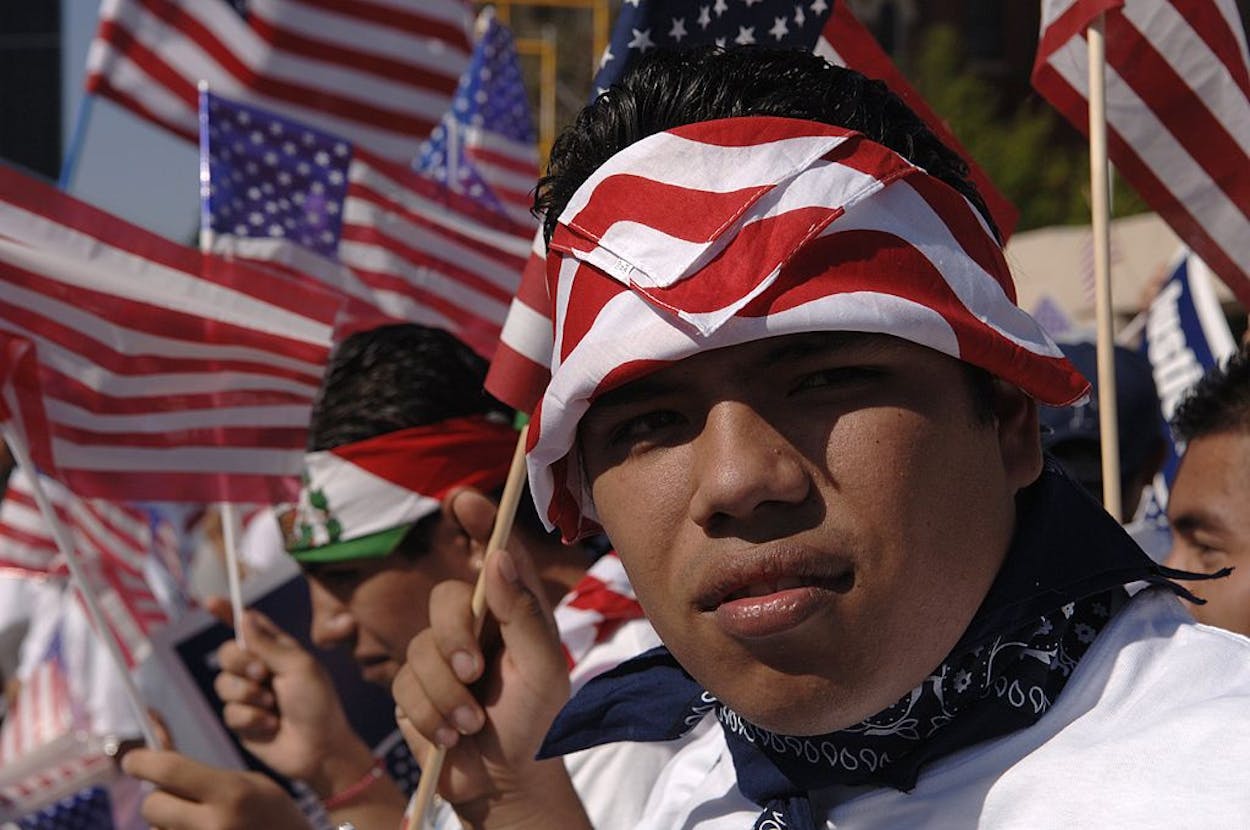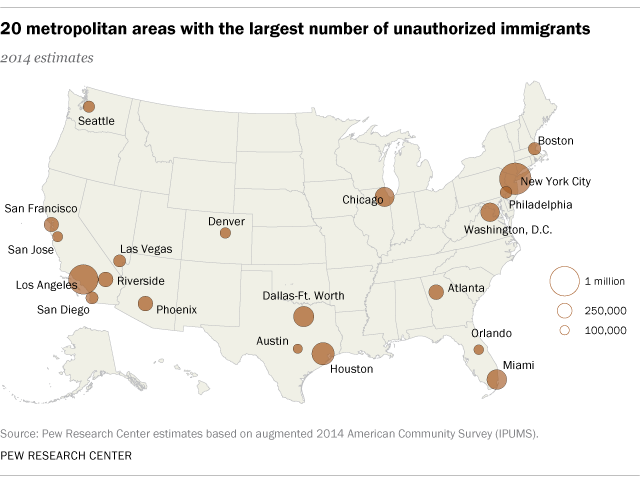A new Pew study shows that the majority of the United States’s 11.1 million undocumented people are spread across just twenty metro areas, with Houston and Dallas-Fort Worth cracking the top five areas with the largest undocumented populations. Nearly 1.1 million undocumented people live in Houston and the DFW—about 575,000 in Houston and 475,000 in DFW. That lands the two Texas cities at number three and number four, respectively, on Pew’s list, behind only New York City and Los Angeles. Austin rounds out the bottom of the list with 100,000 undocumented people.
The report, which you can read here, shouldn’t come as a surprise to Texans. But it does help put into perspective the potential impact certain policies—particularly Governor Greg Abbott’s war on sanctuary cities and President Donald Trump’s executive actions against immigration—could have on some of Texas’s biggest population centers.
Abbott has threatened to punish Texas cities and universities that don’t fully cooperate with federal immigration authorities, but he had failed to pass legislation that would actually ban sanctuary cities. That may change soon, however. Abbott lashed out at Travis County last month, cutting off more than $1.5 million worth of state grant funds because Travis County Sheriff Sally Hernandez implemented a policy that limits the cooperation of county jails with federal immigration agencies. And there is currently a bill proposal, SB 4, set to go before the House that would make it possible for state lawmakers to withhold funding from local governments and jurisdictions that have perceived sanctuary policies.
At the federal level, Trump has promised to crack down on undocumented immigrants, saying throughout his campaign that he would deport as many as three million people. Shortly after he was inaugurated, Trump signed an executive order that broadened the reach of federal immigration agents to conduct more deportations and threatened to defund sanctuary cities. The impact of this executive order has already been felt among undocumented communities in southern California, Arizona, and even Austin, where ICE has reportedly conducted raids this week that have swept up people who had been living and working here for years—the kind of undocumented people who had generally not been primary targets of federal immigration agencies under Barack Obama’s administration.
Despite the threats to sanctuary cities at both a state and national level, Houston has recently doubled down on its commitment to providing safe harbor for its undocumented populations. Earlier this week, Houston Mayor Sylvester Turner told the Houston Chronicle that the city would remain friendly to everyone, even in the wake of anti-immigrant policies that may come from the state or the feds. “I have always said that we are a welcoming city; that we embrace every one,” Turner said. “The Houston Police Department is not going to be ICE or INS. In my administration, it’s not going to happen.”
Dallas Mayor Mike Rawlings, on the other hand, told Dallas radio station WBAP on Friday that he does not consider Dallas a sanctuary city, and that he’d continue to follow federal immigration laws. “What a sanctuary city says is that we do not obey the federal law when we are asked to do so, and that is not the case in Dallas,” Rawlings said. “We need to be a welcoming community. But you can do that and still respect the law and make sure you implement all laws.” His comments came on the heels of a resolution passed by the Dallas County Commissioners Court on Tuesday calling for local law enforcement officials to “end nonessential collaborations” with ICE. According to the Dallas Morning News, the resolution is not legally binding, and Rawlings said in a statement that while the sentiment of the resolution was positive, the city will continue to cooperate with the feds as usual.
It remains to be seen if SB4 will pass the House, and any anti-sanctuary action Trump’s administration actually takes would almost certainly face a fierce legal battle. There are still questions about how these potential punitive measures would be enforced. But if they do come to pass, the new Pew report proves that a two-pronged state and federal attack on immigrant sanctuaries could have a major impact on two of Texas’s biggest cities.








